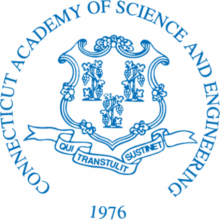Frederic Richards remembers when chemistry sets “were allowed to actually do something.” Those were the good old’ days, when a chemistry set could cause explosions and kids had fun observing smoke rise from mixing and heating mysterious substances. Dr. Richards spent his childhood in the company of his older sister Marianna, who served as a “role model and made sure that I would be a good chemist.” Later, he attended Phillips Exeter Academy, where the science department permitted students access to the labs outside of class hours, cementing his “commitment to a scientific career.” Marianna was not to be disappointed. Dr. Frederic Richards became Sterling Professor Emeritus of Molecular Biophysics and Biochemistry at Yale University and has earned numerous awards, including the Pfizer-Paul Lewis Award in enzyme chemistry, the Kai Linderstrom-Lang Award of the Danish Academy of Science, the Merck Award from the American Society for Biochemistry and Molecular Biology, the Protein Society’s Stern and Moore Award and the 1995 Connecticut Medal of Science Award. For more than half a century, his work has informed protein chemistry. Dr. Richards’ research enhanced the understanding of protein assembly, enabling researchers to manipulate the protein molecule and even change its biological function.
According to Dr. Richards, “for those with a scientific bent, MIT was the obvious choice for college in 1943.” While studying at MIT, he took a physics course in X-ray diffraction that “determined the direction of his future research.” After graduation from MIT, it was Marianna who once again helped set his direction by encouraging him to pursue a PhD program at Harvard University, where he studied proteins—their composition, cellular dimensions, density and structure. In 1955, Dr. Richards made his debut at Yale. Although he would eventually spend all of his scientific career at Yale, he admitted to never really feeling that he was a “Yale man,” since he had attended Harvard.
During his tenure at Yale, Dr. Richards primarily focused on the Ribonuclease-S project in which he and his colleagues studied the relationship between the structure of a protein in a crystal and its comparable form in a solution. According to Dr. Richards, his research has “profound implications for the biotechnology industry. In creating drugs, for example, people are applying this knowledge to develop inhibitors for enzymes, which would prevent the growth of deadly viruses.”
“Dr. Richards’ contributions to the field of biophysics have been substantial, not only in his approach to research and discovery, but also in regard to his uncompromising integrity and willingness to work with others," said Seamus Levine-Wilkinson, a graduate student in the Biology Department in the Krieger School of Arts and Sciences at John Hopkins University, where Dr. Richards was a guest lecturer in June 2006. In his paper entitled, “Whatever Happened to the Fun? An Autobiographical Investigation,” Dr. Richards says that he is concerned for the future of students and researchers because following a “brief apprenticeship phase” there is less time for the fun of research. He would like to see the “fun component reinstated.”


